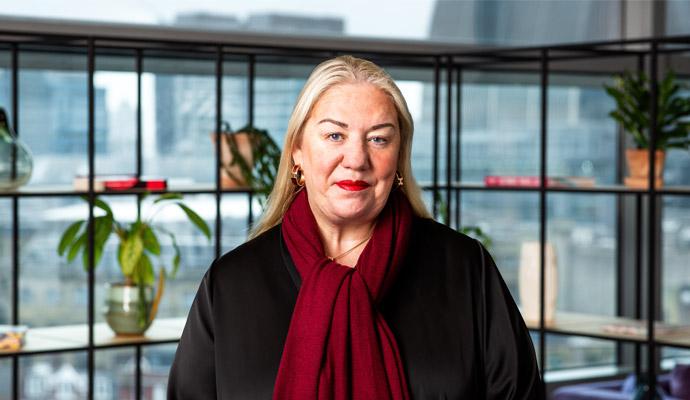Do sweat the small stuff when it comes to inclusion
Many employees feel that their leaders’ everyday actions don’t match their words. So what can be done to build trust?
How inclusive is your organization, truthfully? It’s easy to point to a leadership memo or policies as evidence of progress, but how deep does inclusion in your company go? Can you say that creating a culture of belonging for all, so that everyone can achieve his or her fullest career aspiration, is stamped into the core of your business and embedded in its purpose? And what steps have you taken, as a leader, to make it a part of your everyday work?
Superficial box-ticking exercises in inclusion are arguably as damaging as exclusion. Inauthenticity—when actions don’t match words—destroys trust. And there are broad indications that leaders have an authenticity problem. About half of the employees who participated in PwC’s 2021 Global Culture Survey reported not feeling listened to, seen, or included at work. CEOs’ responses to the same survey revealed a much rosier outlook (see chart below). This disconnect tells us that managers might pay lip service to inclusion, but employees aren’t feeling real effects from all the talk.
On the other hand, leaders who nurture a deep and genuine sense of inclusion in their organizations are able to drive employee engagement and retention, and create a bond of trust with their people. But many struggle with how to do this. Two-thirds of leaders who responded to PwC’s recent Future of Work and Skills survey said that building high levels of trust between employees and their direct supervisors is important, but only 30% strongly agreed that they’re doing what’s necessary to make it happen.
When it comes to inclusion, small actions matter just as much as—or more than—big, formal proclamations. We’ve seen the following leadership tactics work to increase inclusion, and by extension trust, in the organizations we advise.
Examine your own habits and unconscious biases
Getting serious about inclusion requires a high degree of self-awareness on the part of leaders. You have to understand the ways in which you, personally, are affecting inclusion before you can drive more of it. Try these approaches.
Get to know yourself better so that you can spot your unconscious biases. Try journaling or setting aside dedicated time to reflect on your interactions with others. How is your own uniqueness that you bring to work—your nationality, role in your family, or day-to-day feelings—informing what you do and say? One leader we worked with made it a habit to check in with a trusted colleague and ask for feedback on when and how she was exhibiting bias in her words and actions.
Put your inclusion intentions front and center. Find a mechanism that works to keep inclusion at the top of your mind in every team or one-on-one meeting. You might put a sticky note on your computer monitor, post a mantra on your wall, or simply take a few minutes before meetings to jot down notes about how you can be conscientious of inclusion in your upcoming interaction. Then, after the meeting, reflect on what you’ve learned. Had you assumed you knew what your team members want? Or what matters most to them? Or how they want to interact and work with you and others? For example, perhaps you want to reward a few team members for meeting a goal, so you give them a shout-out during a meeting and present them with a gift card to a local steakhouse. But what if those employees are uncomfortable with public praise and would have preferred private recognition? Or what if one of them is a vegetarian?
Explore divergent thinking by engaging with people who are different from you. Look beyond your trusted circle when trying to solve a problem, and seek out those who can provide a contrary perspective. One senior leader we worked with did just that when handling a promotion decision. He had a couple of candidates and wanted to understand how to apply diversity, equity, and inclusion principles to inform the decision. After initially turning to people he had worked with for years, he called a colleague from a different team whose background was not like his own, and found that her thinking was also not like his own. Her perspective, which he never would have heard from his usual group, made him approach his decision-making differently. Leaders tend to have a close (and often small) circle of people they trust; the challenge is to find a way to keep expanding this circle in a meaningful manner as your career progresses over the years—to nurture trust in your existing connections but also commit to building new relationships.
Create the interaction contract together
We all have our own preferences, needs, and understandings when thinking about what constitutes inclusion. It’s your job as leader to take the time with each individual to understand what works for him or her, and for the team as a whole. Be sure to consider the following.
Superficial box-ticking exercises in inclusion are arguably as damaging as exclusion. Inauthenticity—when actions don’t match words—destroys trust.
Agree on your inclusion objectives. Our years of work show that a shared sense of purpose fosters trust within a team. It’s essential that teams invest time and effort in discussing and agreeing on their inclusion goals—and their more general goals, as well. For example, we worked with a company shortly after its inception, when it was forming its executive team. The members of the new executive team spent quality time together during an off-site, defining not only the critical few behaviors they expected the organization to live by but also the leadership team norms. They talked specifically about those behaviors that would demonstrate inclusion and nurture a culture of trust (such as always checking in with someone you know will disagree with you before making a decision) and how they could accompany those behaviors with symbolic acts (such as explicitly recognizing the person you consulted for her contributions to your decision-making).
Approach problem-solving with inclusion in mind. Experiment with appreciative inquiry, an approach to problem-solving that starts with intellectual curiosity—exploring a problem rather than jumping to conclusions—and demonstrates care and respect for all those involved. Listen to learn. And invite everyone on your team to implement these practices. For example, when a team member is in distress because of a problem, a simple but powerful question such as, “What do you need right now?” can create a moment of trust.
Be mindful of the power dynamics that will inevitably exist between you and your team. Try to find the balance between the authority you represent and the level of inclusion you want to encourage. Sometimes you might need to bow out of a meeting to practice inclusion more effectively, giving someone else an opportunity to step up. And remember that power dynamics can also make it difficult for lower-level employees to share feedback with you. One way to address this is to create a “magic circle,” a consistently safe space for employees to share their perspectives. For this to work, though, you truly have to be open to feedback, and you can’t react to it defensively or punitively. You could also agree with your team on a symbolic word or phrase—we’ve used pink elephant and night owl in the past—that playfully triggers a time-out or check-in during a meeting if anyone is uncomfortable. Leaders should model the use of the word or phrase to encourage employees to follow suit. If employees aren’t comfortable with either the magic circle or a symbolic word, then pause, reflect, and be curious about what’s inhibiting the team from being open and honest with one another.
At the core of all of these habits and actions is the closely intertwined relationship between inclusion and trust. But the link is fragile. As a leader, you can build a strong bond of trust by being persistent and consistent in your focus on meaningful inclusion. Nurturing that trust in existing relationships and expanding it with new ones will improve collaboration, productivity, and decision-making, and drive your team to new heights.








